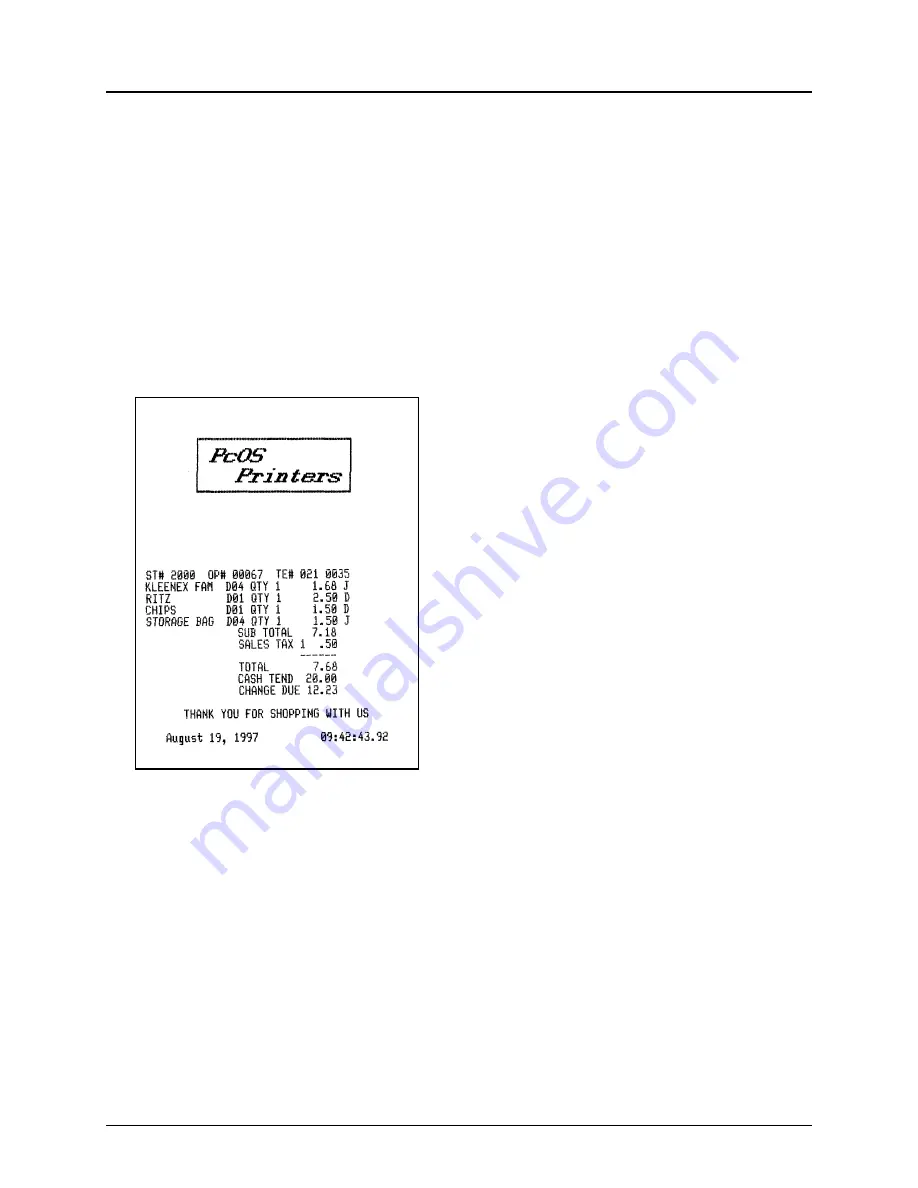
Printing Graphics
PcOS Series 90PLUS
Programmer's Guide
Page 152
Rev Q
11/07/05
10.2
APA Graphics
The printer is capable of all-points-addressable (APA) graphics. Generating a graphic image by hand is time
consuming and tedious. It is possible to use a graphic package to create a graphic image. The following
procedure will help with the setup.
1.
Generate the graphic image in the program of your choice.
2.
Make sure the paper size you pick fits the printer station you intend to use. If the paper size cannot be set,
print a portion of the page.
3.
Print the graphic to a file using a generic, IBM, graphic, 9-pin driver. The standard IBM resolutions are:
240 x 216 dpi, 120 x 72 dpi, and 60 x 72 dpi. The Series 90PLUS Printer supports all three resolutions. For
good resolution with reasonable speed, use 120 x 72 dpi.
4.
Print the graphic image to a file.
5.
Edit the resulting file to remove any unwanted form control, and insert the Series 90PLUS form control.
6.
Make the resulting file available to your application, so it will be sent to the printer when required.
Figure 33 Receipt with APA graphics
As with all graphics, the data path to the printer must be eight bits. Seven-bit protocols will not work.
The quad-density graphic resolution will give the best rendition of your graphic image; however, this mode is
slow and prints very dark. The printer is set up to provide the best performance in normal operation. For this
reason, quad-density graphics should be used on a limited basis.
The APA graphic example in Figure 33 was done with double-density graphics. The graphic driver used made
an approximation of the graphic image.
Summary of Contents for Ithaca 90PLUS Series
Page 2: ...Page ii Rev Q 11 07 05...
Page 12: ......























